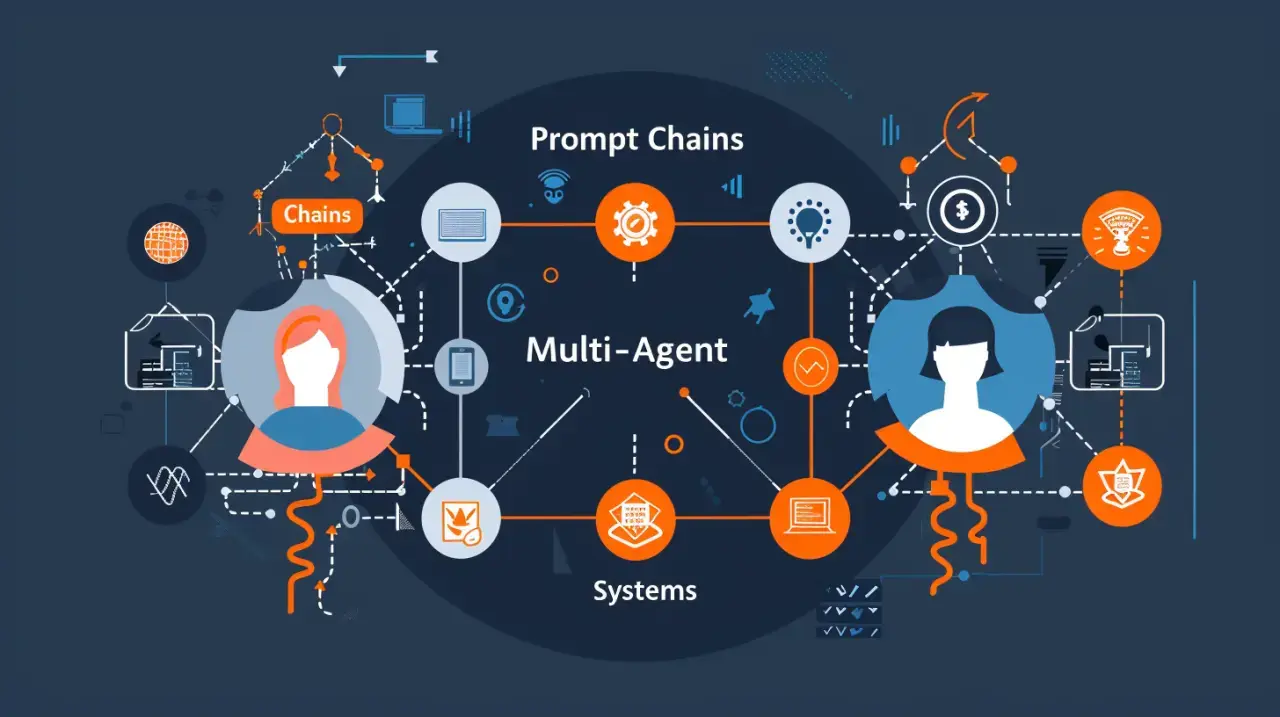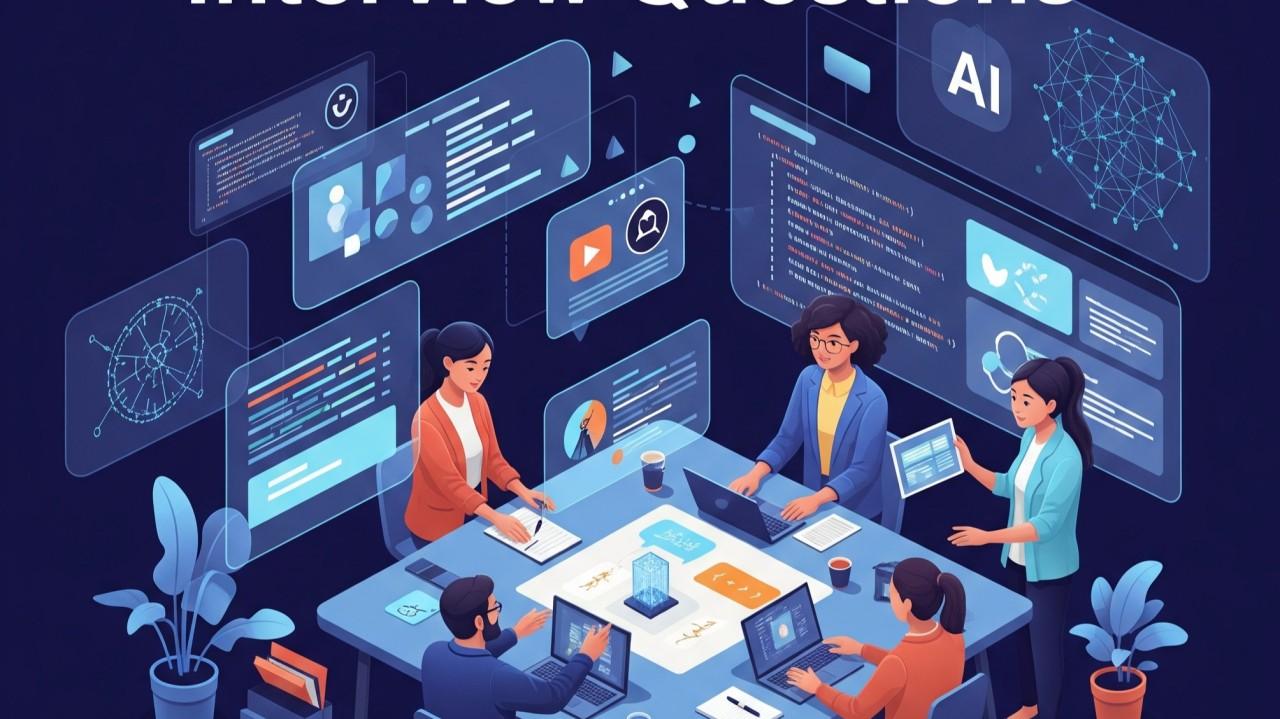Section 1: Introduction
In the early 2010s, the software industry saw the rise of a new archetype: the full-stack engineer. These engineers weren’t just front-end specialists or back-end developers, they were capable of building entire products end to end, from UI to database to deployment. The industry realized that engineers who could bridge multiple layers of development brought not just technical power, but also speed, agility, and versatility.
Fast forward to 2025, and a similar shift is happening in machine learning (ML). Where ML engineers were once primarily focused on building and training models, today’s roles increasingly demand ownership of the entire lifecycle: data ingestion, feature pipelines, experimentation, deployment, monitoring, and scaling. In essence, ML engineers are becoming the new full-stack engineers.
Why This Shift Is Happening
ML engineering used to be tightly siloed. Data scientists experimented with models. Data engineers cleaned and structured data. DevOps handled infrastructure. ML engineers-built bridges between these pieces, focusing mainly on integrating models into production.
But the demands of modern businesses, particularly those deploying ML into production at scale, have changed. Now, ML engineers are expected to:
- Understand data engineering well enough to design robust feature pipelines.
- Apply software engineering best practices to ensure reproducibility, testing, and modularity.
- Handle infrastructure using cloud platforms, containers, and orchestration tools.
- Monitor deployed models with MLOps frameworks like MLflow and Kubeflow.
- Communicate business impact to stakeholders, ensuring technical decisions align with product goals.
That is the definition of a full-stack ML engineer.
Parallel to Full-Stack Software Engineers
Just as web engineers evolved into full-stack developers when companies needed smaller, more versatile teams, ML engineers are following the same trajectory. The industry is realizing that while specialists will always matter, hiring generalists who can handle end-to-end ML workflows provides massive leverage.
Consider the difference between a traditional ML role and today’s expectations:
- Then: Train a churn prediction model and hand it off to another team.
- Now: Own the full process, design the data pipeline, select features, train the model, deploy it in production, monitor drift, and retrain when needed.
This is not just “machine learning.” It’s full-stack engineering with an ML-first mindset.
Why Recruiters Care About This Evolution
Recruiters and hiring managers increasingly screen candidates not only for algorithmic knowledge but also for production readiness. In FAANG and top startups, interview processes now combine coding challenges, ML system design, and MLOps discussions. Candidates who can demonstrate ownership of end-to-end projects rise to the top of the pipeline.
In fact, as highlighted in Interview Node’s guide “Mastering ML Interviews: Match Skills to Roles”, one of the most common reasons ML engineers fail interviews is a lack of breadth. Strong model-building skills are no longer enough. Companies want engineers who can design systems that scale and deliver real-world impact.
Key Takeaway
The ML engineer role is no longer confined to model building. It now spans the entire ML lifecycle, data, infra, deployment, monitoring, and business alignment. This evolution mirrors the rise of full-stack software engineers, making today’s ML engineers the new full-stack engineers of the AI era.
Section 2: From Specialists to Generalists
In the early stages of machine learning adoption, companies treated ML engineering as a specialized discipline. The role was narrowly defined: take a model created by a data scientist, productionize it, and ensure it could interact with the company’s backend systems. This specialization made sense because ML projects were still experimental, and teams were built with clear boundaries, data scientists for research, data engineers for pipelines, DevOps for infrastructure, and ML engineers as integrators.
But that division of labor is rapidly eroding. Today, ML engineers are expected to act as generalists who own the full machine learning lifecycle, mirroring the trajectory of software developers evolving into full-stack engineers.
The Old Model: Specialists
In the past, ML engineers:
- Focused heavily on model deployment and integration.
- Relied on data engineers to prepare and pipeline data.
- Depended on DevOps for infrastructure and scalability.
- Rarely touched front-end or product-level decision-making.
The result? Projects often stalled due to bottlenecks. A model might work in a Jupyter notebook but fail in production because the data pipeline was fragile, or because infrastructure teams couldn’t prioritize it.
This “hand-off” culture created inefficiency, and companies realized they needed ML engineers who could bridge the gaps.
The New Model: Generalists
Today’s ML engineers are expected to:
- Design data pipelines themselves, often using Spark, Airflow, or Apache Beam.
- Build and validate models, not just productionize them.
- Deploy to cloud environments (AWS, GCP, Azure) with tools like Kubernetes and Docker.
- Implement monitoring and retraining loops to handle model drift.
- Work cross-functionally with product and business teams to define success metrics.
In other words, they are becoming end-to-end owners.
Why the Shift Toward Generalists?
- Productization of ML:
ML is no longer research-heavy. It powers core business systems, fraud detection, recommendation engines, search ranking. To succeed, engineers must think beyond models and into production realities. - Lean Teams in Startups:
Many startups cannot afford separate data science, data engineering, and DevOps teams. Instead, they rely on ML engineers who can wear multiple hats. - Evolving FAANG Standards:
At companies like Google, Meta, and Amazon, interview loops now test for ML system design and infra readiness, not just coding and theory. This forces candidates to show breadth, not just depth.
A Parallel with Full-Stack Development
The trajectory of ML engineers closely resembles the rise of full-stack developers in software engineering:
- Then: Developers specialized in either front-end (UI) or back-end (databases, APIs).
- Now: Full-stack developers build end-to-end applications.
- Then (ML): ML engineers specialized in productionizing models.
- Now (ML): Full-stack ML engineers manage data, modeling, infra, deployment, and monitoring.
Just as full-stack software engineers became indispensable in agile development teams, full-stack ML engineers are becoming critical to modern AI-first companies.
The Recruiter’s Perspective
Recruiters now explicitly look for ML engineers who can demonstrate generalist capabilities. Resumes that emphasize “cross-functional ownership” or “end-to-end ML projects” stand out. During interviews, candidates are often asked to describe projects where they:
- Built data pipelines.
- Integrated ML into existing systems.
- Designed monitoring for drift.
As noted in Interview Node’s guide “Breaking into ML Engineering: A Software Engineer’s Path to Success at Google and OpenAI”, companies increasingly favor candidates who can bridge silos. Recruiters are less impressed by specialists who can only handle one piece of the puzzle.
Key Takeaway
The ML engineer role is shifting from specialist integrators to generalist owners of the full ML lifecycle. Just as the industry once embraced full-stack software engineers, it now seeks ML engineers who can do it all, data, modeling, infra, deployment, and collaboration. This transition reflects not just hiring trends, but the real-world demands of building production-ready AI systems.
Section 3: The Expanding ML Engineer Skillset
One of the clearest signals that ML engineers are becoming the new full-stack engineers is the breadth of skills they are now expected to master. In earlier years, the ML engineer role was largely about translating models into production code. Today, it has expanded into a hybrid of data engineering, software engineering, DevOps, and product alignment.
Recruiters and hiring managers no longer look only for model-building expertise. Instead, they want ML engineers who can design, build, and maintain end-to-end systems. This requires a toolkit that spans across domains.
3.1. Data Engineering Foundations
ML systems live and die by data quality. That means ML engineers must have a strong grasp of data ingestion, cleaning, and transformation, skills traditionally associated with data engineers.
Key expectations include:
- Building ETL pipelines with tools like Airflow, Luigi, or Apache Beam.
- Managing large-scale data with Spark, BigQuery, or Snowflake.
- Understanding schema design and data governance.
An ML engineer who cannot wrangle data is now considered incomplete.
3.2. Model Development and Experimentation
Of course, modeling remains central. ML engineers are expected to:
- Use frameworks like PyTorch, TensorFlow, and Scikit-learn.
- Apply modern approaches such as fine-tuning LLMs or optimizing gradient boosting models.
- Run rigorous experimentation and A/B testing.
But unlike before, model experimentation is just one part of a larger system. Success is judged not by model accuracy alone, but by business impact.
3.3. Software Engineering Best Practices
ML engineers are increasingly held to the same standards as software engineers. This means writing clean, modular, testable code that integrates seamlessly into larger systems.
Key skills:
- Using Git for version control.
- Applying CI/CD pipelines to ML workflows.
- Writing unit tests for model and data pipeline components.
- Designing APIs to serve models reliably.
Companies now expect ML engineers to think like software engineers first, model-builders second.
3.4. MLOps and Deployment Expertise
Deployment is no longer just “handing off a pickle file.” ML engineers must:
- Containerize models with Docker.
- Deploy using Kubernetes or managed services (SageMaker, Vertex AI).
- Monitor latency, resource usage, and scalability.
- Handle model retraining and data drift detection.
This MLOps skillset is what separates research-driven ML from production-ready ML.
3.5. Cloud Infrastructure and Scalability
Since most companies operate in the cloud, ML engineers need fluency in platforms like AWS, GCP, or Azure. They are expected to:
- Launch scalable training jobs.
- Optimize cost-performance tradeoffs.
- Automate workflows with infrastructure-as-code (Terraform, CloudFormation).
This is where ML engineers start to overlap with DevOps, the very definition of a generalist.
3.6. Communication and Product Alignment
Perhaps the most overlooked but vital skill is communication. ML engineers must explain trade-offs, align with product managers, and communicate impact to stakeholders. They are increasingly evaluated on their ability to translate technical results into business value.
As noted in Interview Node’s guide “Soft Skills Matter: Ace 2025 Interviews with Human Touch”, recruiters place a high premium on candidates who can bridge technical work with product goals. ML engineers who cannot communicate effectively risk being seen as bottlenecks, no matter how strong their technical chops.
Key Takeaway
The modern ML engineer skillset is no longer narrow. It spans data engineering, modeling, software development, cloud, MLOps, and communication. In other words, the ML engineer has become a full-stack engineer in the AI era, capable of delivering production-ready solutions from end to end.
Section 4: Industry Drivers Behind the Shift
The evolution of ML engineers into full-stack professionals is not just a coincidence. It’s being driven by powerful industry-wide trends that reshape how companies build, deploy, and scale machine learning. These drivers come from both the technology side, the complexity of ML systems, and the business side, the need for efficiency, agility, and measurable impact.
4.1. ML Is Moving From Research to Production
Five years ago, most machine learning projects lived in research labs or experimental environments. Today, ML underpins critical business operations:
- Recommendation engines in e-commerce.
- Fraud detection in banking.
- Large language model applications in search and productivity tools.
- Predictive maintenance in manufacturing.
When ML powers revenue-generating systems, companies can no longer afford silos. They need engineers who can own production-grade solutions. This naturally expands the role of the ML engineer.
4.2. Startups Need Leaner, More Versatile Teams
Startups can’t afford large, specialized teams where one person handles data, another modeling, another deployment. Instead, they need generalists who can move fast and cover the full pipeline.
This startup pressure has influenced the broader industry. Even in large enterprises, hiring managers increasingly value engineers who can do more with less. As noted in Interview Node’s guide “Landing Your Dream ML Job: Interview Tips and Strategies”, startups often evaluate candidates more heavily on breadth than depth because versatility is their lifeline.
4.3. FAANG and Big Tech Are Raising the Bar
At FAANG and other leading companies, the definition of an ML engineer has expanded. Recruiters don’t just test for algorithm knowledge anymore, they assess:
- System design: Can you build an ML pipeline that scales to millions of users?
- MLOps readiness: Can you automate retraining and monitoring?
- Infra fluency: Do you understand cost, latency, and reliability trade-offs?
For example, a Google or Meta ML interview now often includes system design rounds where candidates must integrate data ingestion, model training, and serving infrastructure. Candidates without end-to-end expertise struggle to keep up.
4.4. Explosion of ML Tooling
The ML ecosystem itself has exploded. Tools like MLflow, Kubeflow, TensorFlow Extended (TFX), and Vertex AI have blurred the boundaries between modeling, infra, and deployment. To be effective, ML engineers must navigate multiple toolchains, which inherently requires generalist thinking.
In short: the tooling landscape pushes ML engineers to wear multiple hats.
4.5. Business Leaders Want Impact, Not Just Models
Executives don’t care if you boosted model accuracy by 2%. They care if that accuracy increases reduced churn, improved recommendations, or generated revenue.
This shift in expectations means ML engineers must go beyond model metrics. They must understand how their work ties into business outcomes, a skill once reserved for product managers.
4.6. The Rise of LLMs and Agentic AI
The boom in large language models has accelerated this trend. Engineers fine-tuning LLMs or building agentic AI systems can’t just tweak hyperparameters. They must:
- Design retrieval pipelines.
- Handle prompt engineering.
- Deploy APIs for production use.
- Monitor for hallucinations and bias.
These responsibilities cross multiple disciplines, again reinforcing the need for generalist ML engineers.
Recruiter’s Viewpoint
From a recruiter’s lens, these industry drivers explain why resumes with end-to-end project ownership rise to the top. If you can say:
“I built a fraud detection model, designed the feature pipeline, deployed it on AWS, and set up monitoring that caught drift in real time,”
—you are far more valuable than someone who only tuned hyperparameters.
As emphasized in Interview Node’s guide “The Top Machine Learning Roles at FAANG Companies: What They Do, What You Need to Know, and How to Prepare”, hiring managers want ML engineers who can deliver business-ready systems, not just models.
Key Takeaway
The shift from specialist ML engineers to full-stack ML engineers is being driven by:
- ML’s migration from research to production.
- Startup demand for versatile generalists.
- FAANG raising the interview and job-performance bar.
- Tooling that requires multi-disciplinary expertise.
- Business leaders expecting outcomes, not just models.
- The rise of LLMs and agentic AI.
The result? Full-stack ML engineers are no longer a niche, they’re becoming the default expectation for high-impact ML roles.
Section 5: Benefits of the “Full-Stack ML Engineer” Profile
The transition from specialist to full-stack ML engineer isn’t just an industry demand, it comes with tangible benefits for both companies and the engineers themselves. Just as full-stack software developers became invaluable for their versatility, full-stack ML engineers are now highly sought after for their ability to bridge silos, accelerate delivery, and drive measurable business outcomes.
5.1. Benefits for Companies
a. Efficiency and Speed
Having one engineer who can handle data pipelines, modeling, deployment, and monitoring drastically reduces hand-off delays between siloed teams. This is especially critical in startups and high-growth environments, where time-to-market can make or break a product.
b. Cost-Effectiveness
Hiring fewer generalists instead of multiple narrow specialists reduces overhead. A single strong full-stack ML engineer can cover roles that might otherwise require three separate hires.
c. Agility in Experimentation
When engineers own the full pipeline, they can rapidly iterate. They don’t have to wait for a data engineer to adjust ETL or a DevOps engineer to handle deployment, they can do it themselves. This agility drives faster experimentation and innovation.
d. Stronger Business Alignment
Full-stack ML engineers often have greater visibility into the entire lifecycle of a model, from problem framing to production results. This helps companies ensure ML work aligns with business KPIs, not just academic metrics.
5.2. Benefits for Engineers
a. Higher Market Value
Engineers who can operate across the full ML stack are scarce. Recruiters value them more highly, and salaries often reflect this versatility. According to recent hiring reports, ML engineers with MLOps and data engineering skills earn 10–20% more than peers with narrower profiles.
b. Career Resilience
Full-stack ML engineers are more resilient in volatile markets. When companies downsize, generalists who can cover multiple roles are more likely to stay indispensable.
c. Leadership Opportunities
End-to-end ownership makes full-stack ML engineers natural candidates for technical leadership roles. They’re trusted to scope, design, and deliver complex systems, exactly the skill set managers seek when promoting senior engineers.
d. Greater Learning Curve Satisfaction
Many engineers find the breadth exciting. Instead of being boxed into “just modeling,” they gain exposure to infra, DevOps, product alignment, and communication. This broadens their career pathways, from tech lead to applied scientist to ML architect.
A Win-Win for Both Sides
This evolution mirrors what happened with software engineering a decade ago. Companies realized that full-stack developers provided efficiency and flexibility, while engineers enjoyed broader career opportunities and higher pay. The same dynamic is now playing out in ML.
Recruiter’s Insight
Recruiters actively look for “end-to-end ownership” in resumes and interviews. A project that says,
“Built and deployed an ML model in production,”
is far less compelling than,
“Designed data pipelines, trained and optimized models, deployed to AWS using Docker and Kubernetes, and implemented monitoring dashboards that caught drift within 24 hours.”
As emphasized in Interview Node’s guide “FAANG ML Interview Crash Course: A Comprehensive Guide to Cracking the Machine Learning Dream Job”, breadth and end-to-end delivery are now among the most important factors in recruiter decision-making.
Key Takeaway
The benefits of the full-stack ML engineer profile are clear:
- For companies: speed, efficiency, agility, and tighter business alignment.
- For engineers: higher salaries, stronger career resilience, leadership potential, and broader learning opportunities.
It’s no longer enough to be “just a model builder.” The engineers who embrace this evolution gain a competitive edge in the ML job market, and become indispensable to the organizations they serve.
Section 6: Challenges of Becoming a Full-Stack ML Engineer
While the benefits of becoming a full-stack ML engineer are undeniable, the path isn’t without challenges. Expanding into such a broad role requires mastering skills across multiple engineering disciplines, and that comes with trade-offs. Many engineers struggle with balancing depth and breadth, keeping pace with evolving tools, and avoiding burnout.
6.1. The Breadth vs. Depth Dilemma
One of the biggest challenges is the breadth vs. depth problem. Full-stack ML engineers are expected to cover:
- Data engineering
- Model development
- Software engineering best practices
- MLOps and infra
- Business communication
The danger is spreading yourself too thin. Recruiters may question whether you’re truly strong in any single area if you try to cover them all. On the other hand, leaning too heavily on one specialization can leave gaps that limit your ability to claim the “full-stack” profile.
How to address it: Build T-shaped expertise, deep strength in one area (e.g., modeling, data pipelines) and working knowledge across the rest.
6.2. Fast-Paced Tooling Ecosystem
The ML tooling landscape changes constantly. Yesterday’s standard (like Hadoop) has given way to Spark, Beam, and managed platforms. Similarly, deployment shifted from raw servers to Docker, then Kubernetes, and now managed serverless solutions.
Keeping up requires continuous learning, a challenge when engineers are already managing complex workloads. Falling behind in tooling knowledge can make you appear outdated in recruiter eyes.
6.3. Risk of Burnout
Covering the entire ML lifecycle often means long hours and juggling competing demands. Engineers must clean data, optimize models, debug infra issues, and present results to stakeholders, often within tight deadlines. Without careful workload management, this all-encompassing role risks leading to burnout.
6.4. Lack of Organizational Support
Not all companies provide structured pathways for ML engineers to expand their skills. Some organizations still operate in silos, making it difficult for engineers to gain cross-functional exposure. In such environments, aspiring full-stack ML engineers must invest in self-driven learning through side projects, open-source contributions, or specialized courses.
6.5. Hiring Barriers
Recruiters and hiring managers often set very high expectations for full-stack ML roles. Candidates are screened for:
- System design knowledge.
- MLOps expertise.
- Strong coding fundamentals.
- Communication skills.
This bar can intimidate otherwise talented ML engineers who excel in one area but are still developing breadth.
The Recruiter’s Perspective
Recruiters recognize these challenges, but they also see them as opportunities to identify standout candidates. Engineers who can articulate both their depth (specialized expertise) and their breadth (cross-domain fluency) demonstrate adaptability, one of the strongest hiring signals.
As emphasized in Interview Node’s guide “The Common Reasons People Fail FAANG ML Interviews”, failing to balance technical depth with breadth is a major reason strong candidates miss offers. Full-stack ML engineers must carefully position themselves as capable generalists with one or two clear areas of mastery.
Key Takeaway
Becoming a full-stack ML engineer is rewarding but challenging. The biggest hurdles include managing breadth vs. depth, keeping pace with tools, avoiding burnout, and navigating high hiring bars. The engineers who succeed are those who:
- Cultivate deep expertise in one domain.
- Develop broad competency across others.
- Proactively learn new tools and frameworks.
- Frame their versatility as an asset, not a liability.
By acknowledging these challenges, ML engineers can build realistic strategies to thrive in this evolving role.
Section 7: Conclusion + FAQs
Conclusion: The Rise of the Full-Stack ML Engineer
The role of the ML engineer has transformed dramatically over the past decade. What began as a specialist function focused on integrating models into production has evolved into a full-stack discipline that spans data engineering, software development, MLOps, and business alignment.
This shift mirrors the earlier rise of full-stack software engineers, driven by the same forces: the need for efficiency, end-to-end ownership, and business impact. Recruiters now expect ML engineers to demonstrate not only strong technical depth but also breadth across the entire lifecycle of machine learning systems.
For companies, full-stack ML engineers offer agility, speed, and cost-effectiveness. For engineers, the profile brings higher market value, career resilience, and leadership opportunities. The path isn’t without challenges, balancing breadth and depth, avoiding burnout, and keeping pace with evolving tools, but the payoff is significant.
The bottom line: ML engineers who embrace this full-stack identity will be the ones who thrive in FAANG, startups, and beyond.
FAQs
1. What does “full-stack ML engineer” really mean?
It refers to ML engineers who can handle the entire ML lifecycle, from data pipelines to modeling, deployment, and monitoring, much like full-stack software developers handle both front-end and back-end.
2. Do I need to master every area to be considered full-stack?
No. Companies prefer T-shaped engineers: deep expertise in one domain (e.g., NLP, data pipelines) with broad competency across others.
3. Is MLOps essential to becoming full-stack?
Yes. Recruiters increasingly filter for MLOps skills like Docker, Kubernetes, and CI/CD. Without them, your profile looks incomplete.
4. How do recruiters screen for full-stack ML engineers?
They look for end-to-end project ownership on resumes and ask system design questions in interviews. As noted in Interview Node’s guide “Unspoken Rules of ML Interviews at Top Tech Companies”, vague resumes without ownership signals rarely pass screens.
5. Do startups value full-stack ML engineers more than FAANG?
Startups often value them even more because they need lean, versatile teams. But FAANG also expects broad capabilities, especially in system design and infra.
6. Will specializing hurt my chances?
No, specialization is still valuable. The key is to pair depth with enough breadth to integrate your specialty into end-to-end systems.
7. What’s the best way to build full-stack skills?
Work on end-to-end projects. Build data pipelines, train models, deploy them, and monitor performance. As noted in Interview Node’s guide “Crack the Coding Interview: ML Edition by InterviewNode”, showing real project ownership is more valuable than theory alone.
8. How does communication factor into being full-stack?
It’s critical. Companies want engineers who can align models with business impact. Poor communication is one of the fastest ways to fail behavioral interviews.
9. What’s the biggest challenge of being full-stack?
The breadth vs. depth dilemma. Engineers risk spreading themselves too thin. Successful candidates balance broad competency with deep expertise in one or two areas.
10. Are full-stack ML engineers paid more?
Yes. Surveys show ML engineers with MLOps and data engineering skills earn 10–20% more on average than their peers who focus only on modeling.
Key Takeaway
The industry is clear: the era of the narrow ML engineer is fading. The full-stack ML engineer is now the gold standard, and those who adapt to this reality will be the ones driving the future of AI.






